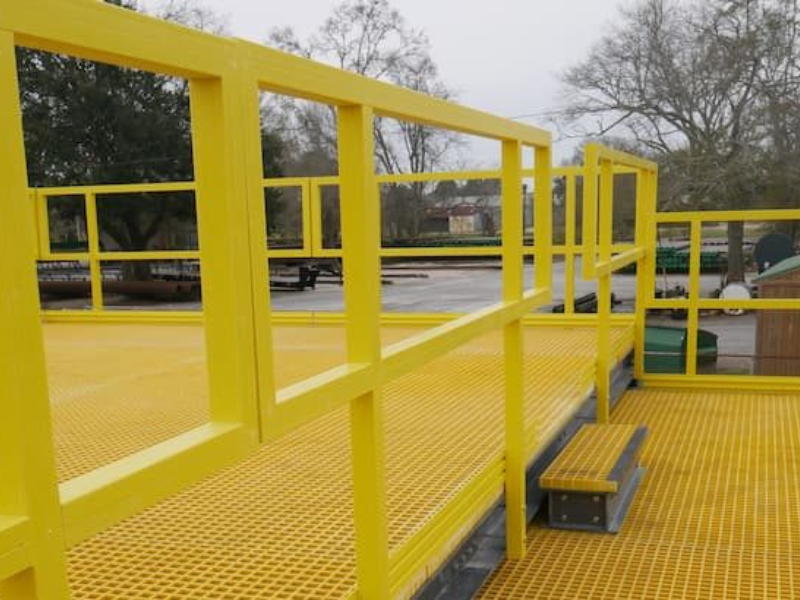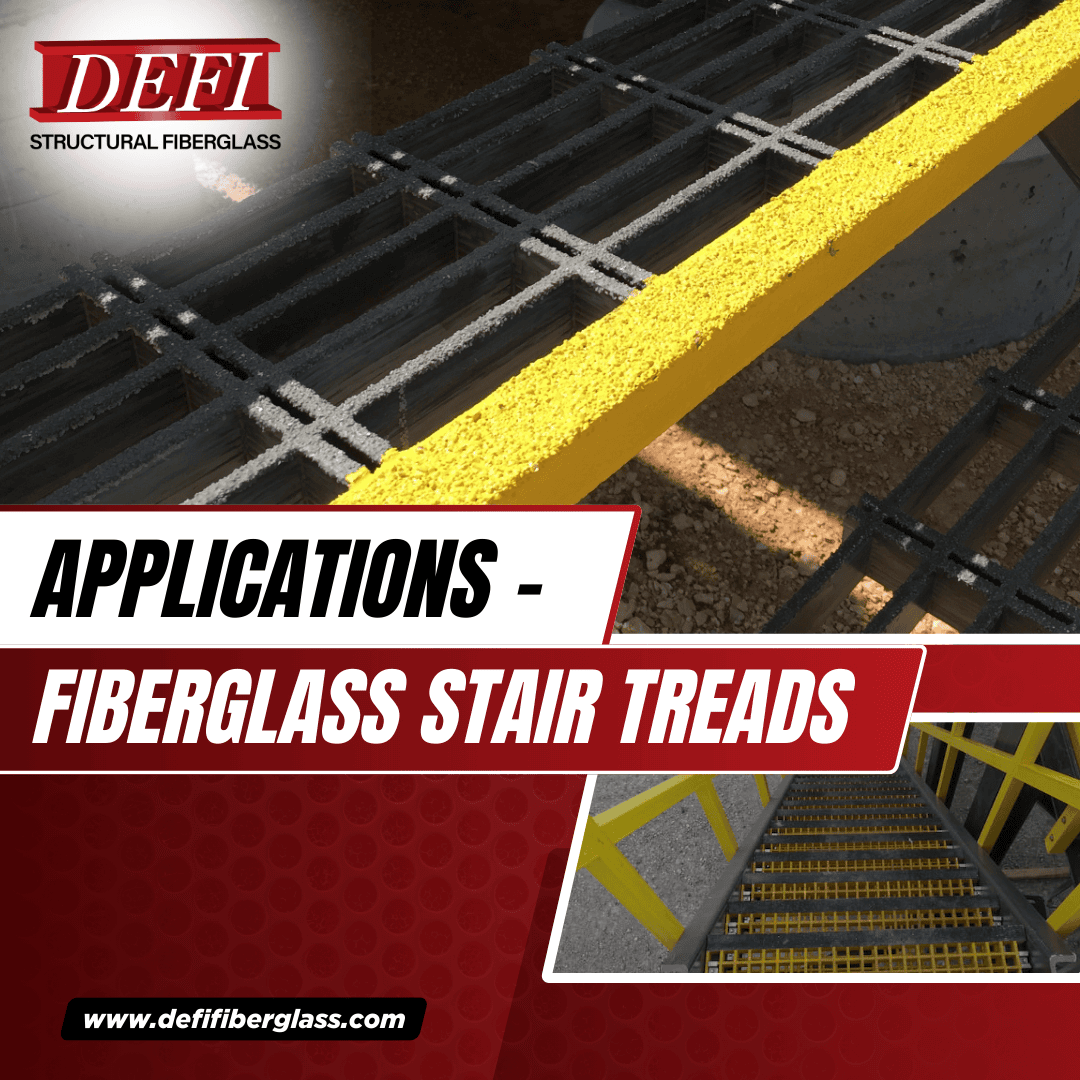
In the oil and gas industry, the infrastructure and equipment are constantly exposed to chemicals, heavy loads, and extreme temperatures. That’s why choosing FRP and fiberglass in the oil and gas industry is a smart alternative to steel or aluminum, which can corrode and rust over time. FRP provides many benefits compared to traditional materials and can withstand the toughest conditions.
Corrosion Resistance
Fiberglass is non-metallic and is made with chemically inert resins, making FRP naturally resistant to corrosion and non-reactive to chemicals. This makes it ideal for environments where it could potentially be exposed to crude oil. This benefit of FRP allows it to outperform steel, especially in harsh environments found in the oil and gas industry.

Lightweight but Strong
FRP is ⅓ the weight of steel but has a strength-to-weight ratio that’s up to 3 times higher. This adds so many advantages for oil and gas applications. The lightweight of FRP reduces the structural load while still providing the strength to support the structure, which is especially important for offshore operations. This also makes FRP easier and less expensive to install compared to steel.
Added Safety
In the oil and gas field, safety is extremely important. FRP enhances workplace safety because it can be manufactured with fire-retardant and anti-slip resins. This makes FRP great for platforms, walkways, or stairs that might get wet or oily. FRP is also non-conductive, so it is safe to use around electrical equipment.

Durability
Oil and gas infrastructure is exposed to harsh environments and chemicals. Because FRP is built to withstand extreme temperatures and UV exposure, it outlasts steel and aluminum.
What is Fiberglass Resistant to?
- Corrosion
- Impacts
- Chemicals
- Heat
- Extreme Weather
- Saltwater

Corrosion Resistance
Fiberglass is non-metallic and is made with chemically inert resins, making FRP naturally resistant to corrosion and non-reactive to chemicals. This makes it ideal for environments where it could potentially be exposed to crude oil. This benefit of FRP allows it to outperform steel, especially in harsh environments found in the oil and gas industry.
Lightweight but Strong
FRP is ⅓ the weight of steel but has a strength-to-weight ratio that’s up to 3 times higher. This adds so many advantages for oil and gas applications. The lightweight of FRP reduces the structural load while still providing the strength to support the structure, which is especially important for offshore operations. This also makes FRP easier and less expensive to install compared to steel.
Added Safety
In the oil and gas field, safety is extremely important. FRP enhances workplace safety because it can be manufactured with fire-retardant and anti-slip resins. This makes FRP great for platforms, walkways, or stairs that might get wet or oily. FRP is also non-conductive, so it is safe to use around electrical equipment.
Durability
Oil and gas infrastructure is exposed to harsh environments and chemicals. Because FRP is built to withstand extreme temperatures and UV exposure, it outlasts steel and aluminum.
What is Fiberglass Resistant to?
- Corrosion
- Impacts
- Chemicals
- Heat
- Extreme Weather
- Saltwater

Low to No Maintenance
Because FRP and fiberglass aren’t easily damaged and can handle heavy foot traffic, there isn’t need for much maintenance. FRP doesn’t crack, warp, or rot, and it doesn’t require a coating to maintain its integrity.
Applications of FRP and Fiberglass in the Oil and Gas Industry
- Handrails
- Platforms
- Stair Systems
- Gratings
- Cable Trays
Whether it’s an offshore rig or a drilling site, FRP and fiberglass in the oil and gas industry are a smart investment. It can meet the needs of the industry and add to work safety.
Our team can create customized fiberglass structures to fit your exact specifications. Contact us today to discuss your project and find the perfect solution for your needs.
Check out our resources page here.
Follow us on LinkedIn!




